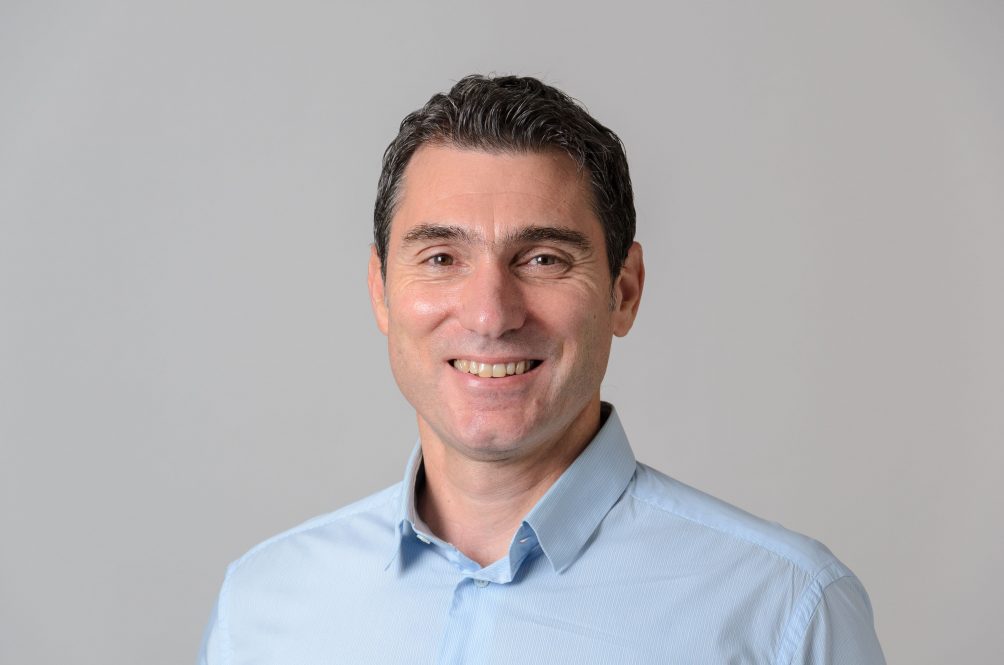The University of Connecticut is proud to announce that Emmanouil “Manos” Anagnostou, Board of Trustees Distinguished Professor and Eversource Energy Endowed Chair of Environmental Engineering, has been elected a Fellow of the American Meteorological Society (AMS).
The AMS Fellowship is one of the highest honors in the atmospheric and related sciences, awarded to individuals who have made outstanding contributions to the advancement of the field.
This prestigious honor recognizes Anagnostou’s groundbreaking contributions to remote sensing hydrology, hydrometeorology, and environmental engineering.
Anagnostou’s pioneering research has transformed how scientists understand and quantify precipitation, characterize uncertainty, and predict the impact from extreme weather events. His early work demonstrated that radar observations from NASA’s Tropical Rainfall Measuring Mission (TRMM) and Global Precipitation Mission (GPM) satellites could be used to calibrate ground-based weather radars — a methodology now adopted by the U.S. National Weather Service and international agencies.
At UConn, Anagnostou is the executive director of UConn Tech Park and the executive director of the Institute of the Environment and Energy (IoEE). He is also the founding director of UConn’s Eversource Energy Center, an academic-industry research partnership promoting energy grid resilience.
“Anagnostou’s election as an AMS Fellow is a testament to his scientific excellence and global impact,” says Pamir Alpay, Vice President for Research, Innovation, and Entrepreneurship. “From his professorial duties in the College of Engineering to his leadership at UConn Tech Park and IoEE, he is a vital contributor to UConn’s scholarly community. His research is changing the world for the better, and safeguarding Connecticut’s future.”
Anagnostou’s professional achievements include the following:
- Satellite Rainfall Retrieval: Anagnostou developed the first truly combined radar-radiometer precipitation profile retrieval algorithm. This work laid the foundation for subsequent TRMM/GPM algorithm developments at NASA, as well as a large volume of publications related to overland satellite precipitation algorithms over the past twenty years.
- Uncertainty Quantification for Extreme Weather: Anagnostou created a model (the stochastic satellite rainfall error model, or SREM2D) to help researchers better understand satellite rainfall estimation errors. With a greater ability to grasp and account for uncertainty in these estimations, hydrometeorologists can now more accurately predict extreme weather events and evaluate the impact of these predictions in hydrological applications.
- Thunderstorm Monitoring: Anagnostou developed a long-range lightning detection network to monitor lightning activity across large regions (continents and oceans). He discovered that lightning could be analyzed to better understand the behavior of thunderstorms across extremely large areas and can be used as proxy to improve the quantification of precipitation from thunderstorms. He and his students have published over 20 journal articles on this topic. His long-range lightning detection technique is currently in use across multiple meteorology networks covering South America and Europe.
- Outage Prediction Modeling: Anagnostou led the development of a patented Outage Prediction Model (OPM) that accurately predicts power outages caused by severe weather events, including tropical cyclones, winter snow and ice storms, high wind events, and heatwave and thunderstorms. This model is now used by electric utilities nationwide.
- Global Capacity Building: Anagnostou directed a multi-institutional NSF Partnerships for International Research and Education (PIRE) project to improve seasonal forecasting and agricultural planning in Ethiopia. His work was featured by the United Nations in their Academic Impact reporting.
“This honor is a well-deserved recognition of Anagnostou’s pioneering contributions to hydrometeorology and remote sensing,” says JC Zhao, Dean of the College of Engineering. “His work has advanced scientific understanding and has had a profound impact on real-world applications in weather prediction and water resource management. At the College of Engineering, we are proud to celebrate Anagnostou’s excellence and leadership in the field. He exemplifies the true potential of engineering research.”
Beyond his research, Anagnostou has served in leadership roles across the AMS, the American Geophysical Union (AGU), and the European Geosciences Union (EGU). He currently serves as Editor-in-Chief of the Journal of Hydrology and Vice President of the International Commission of Water Resources Systems of the International Association of Hydrological Sciences.
Anagnostou also fosters the spirit of scientific inquiry and service among his scholarly mentees. As just one example, Viviana Maggioni ‘12 Ph.D. is currently serving as the Editor in Chief for Journal of Hydrometeorology.
“It’s a true privilege to receive this recognition from my respected peers at the American Meteorological Society,” says Anagnostou. “For more than 25 years, I’ve devoted my research to the field of precipitation and hydrometeorological hazards — an area that is becoming increasingly important as we face more frequent and intense extreme weather events. Advancing hydrological and meteorological science is essential to protecting human life and the structures that enable it. I’m deeply grateful to AMS for honoring my work, and that of my students, in this ever-evolving field.”



